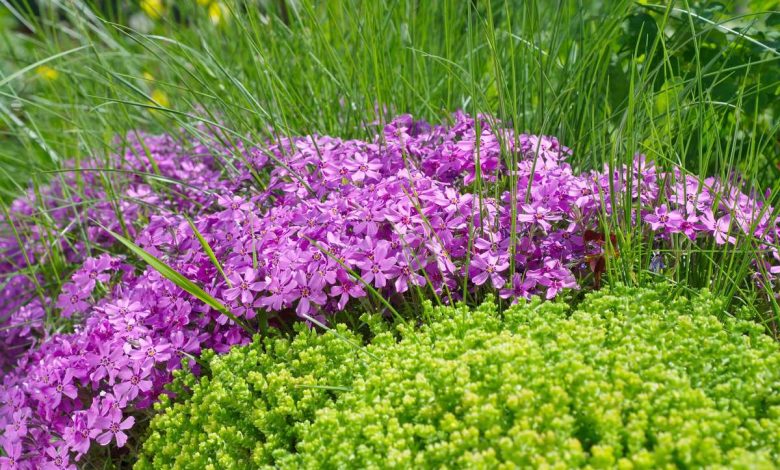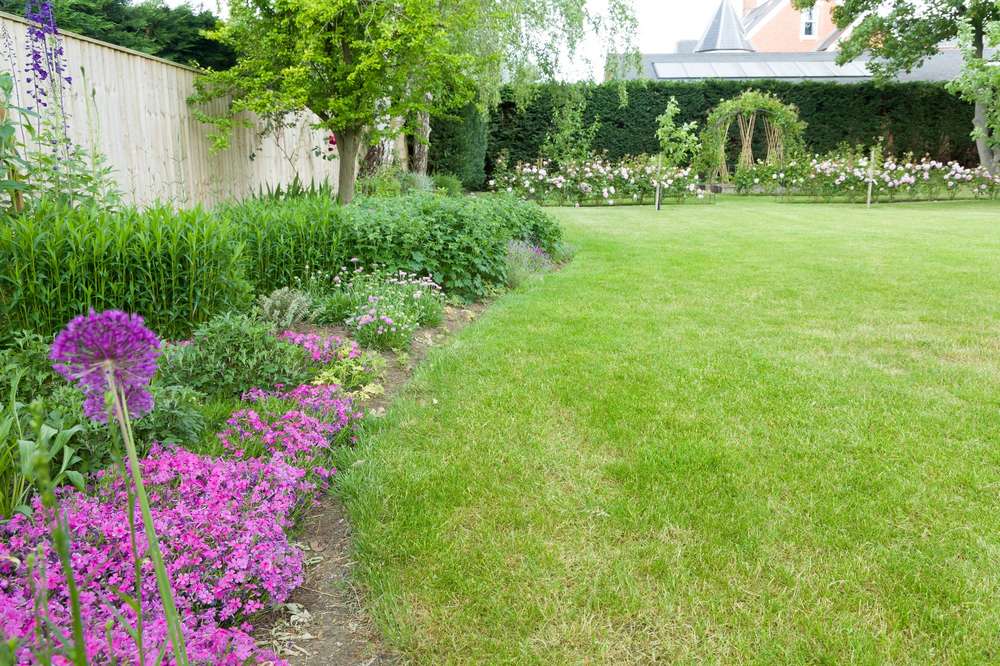
The native to North America, Phloxes are hardy perennials with many species. Among them, the dwarf phlox or moss phlox (Phlox subulata) is one of the most decorative as a ground cover for the border of a driveway, terrace, in a rockery or on an embankment.
What there is to know :
Botanical name: Phlox subulata
Common name: Dwarf phlox, Moss phlox
Family: Polemoniaceae
Height and Spread: This perennial forms a spreading clump with branches running along the ground. It reaches 10 to 15 cm high and 40 to 50 cm wide. Its growth is slow, especially in cold climate regions.
Foliage: The leaves are narrow, of a beautiful shiny green turning bronze green in summer. The foliage, semi-evergreen in winter, disappears completely in spring under the countless small starry flowers.
Flowers:The flowering period lasts about 3 weeks, from April to June depending on the region. The 3 cm diameter star-shaped flowers are single and appear at the end of short upright stems. They have 5 petals. Their beautiful colors vary from blue to pale violet, through a very pretty purple violet, to white, carmine red or come in almost any shade of pink. They have a small darker eye in the center and are delicately scented (spicy scent)
Exposure: In the sun, except in very hot regions in summer where partial shade is preferable.
Soil : Ordinary soil, well drained, especially in winter, but rich and cool in summer.
Hardy: Very resistant to cold in all regions, even at altitude.
Planting Dwarf Phlox
Phloxes fear excess humidity . They must therefore be offered a location in well-drained soil, in the sun or in partial shade, and sheltered from the wind.
The soil must be neutral, sandy or slightly calcareous.
The best planting time is between early autumn (October) and spring (April), excluding the frost period.
- Prepare the soil by mixing the soil with compost and a few handfuls of sand or gravel to improve drainage if your soil is heavy or clayey.
- During this time, let the buckets soak in a basin of rainwater.
- Remove them then install the dwarf phloxes in their place in the planting holes made. The collar of the plant should be positioned at ground level.
- To create a bed, space your dwarf Phloxes 40 cm apart, i.e. a density of about 6 plants per m².
- Fill with the mixture of enriched and lightened soil. Tamp well with the palms of the hands all around the plant and finish with a copious watering.

Caring for Dwarf Phloxes
Growing phlox subulata is very easy as long as the soil is rich and stays cool.
Fertilizer supply: Dwarf phloxes are greedy: the richer the soil, the more beautiful they are! They therefore appreciate a handful of compost at the end of winter, another at the beginning of autumn. Lift the creeping foliage to spread it well on the surface of the ground. Claw the earth to mix it.
Cleaning: After flowering, remove all faded stems to keep the clump looking good. If the creeping branches go a little in all directions, do not hesitate to shorten them to keep a compact tuft.
Watering: The soil must remain cool in summer. Regular watering is therefore appreciated, especially in pots, but also in the ground, even when the dwarf phloxes have been installed for several years.
Uses and beautiful associations with Moss Phlox
As the habit of dwarf Phloxes is creeping, you can use these beautiful carpeting plants at the front of perennial beds, along paths or terraces, above a dry stone wall, on a small embankment, in a large planter, in a dry gravel garden or even in a rockery.
The most beautiful combinations of dwarf phloxes are made with all kinds of perennial geraniums , but also with columbines , spurges or even anemones .
The cultivation of dwarf Phlox is also possible in a pot , in a planter or in a stone trough in order to decorate a window sill, a terrace or a balcony, but it is then necessary to make sure to offer it a rich soil and to keep the substrate fresh.
Dwarf Phlox leaves turn red
Very resistant, the Moss Phlox is insensitive to diseases and parasites.
But he fears an excess of water, especially in winter. The plant can then die due to root asphyxia.
Conversely, in land that is too dry in summer, its evergreen foliage can lose its green color and take on a red tint. Remember to water it regularly to avoid this problem.
In winter, with the cold, some leaves can also take on a purplish tint. However, everything is back to normal in the spring when the vegetation starts up again.
When and how to cut the Dwarf Phlox?
Propagation by cuttings or by division is possible.
Cuttings
The cuttings are done in March , under shelter. Cut the stems or the roots of the plant by installing them in pots of compost that you keep under cover.
Stem cuttings root and grow faster than root cuttings. They can be planted the following autumn, whereas it is better to wait until the following spring for root cuttings.
Division of clumps
The division of the clumps is carried out in the spring or in the fall. Keep only the shards taken from the outside of the mother clump and immediately replant them elsewhere. Water copiously to promote a good recovery.
Did you know ?
The name Phlox comes from the Greek and means “the flame”, a name given in reference to the very bright colors of the flowers.
